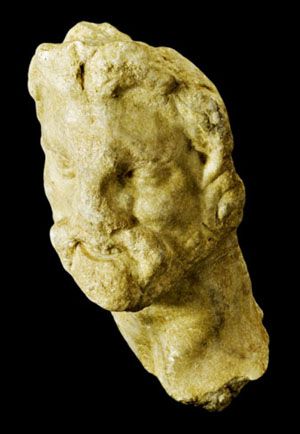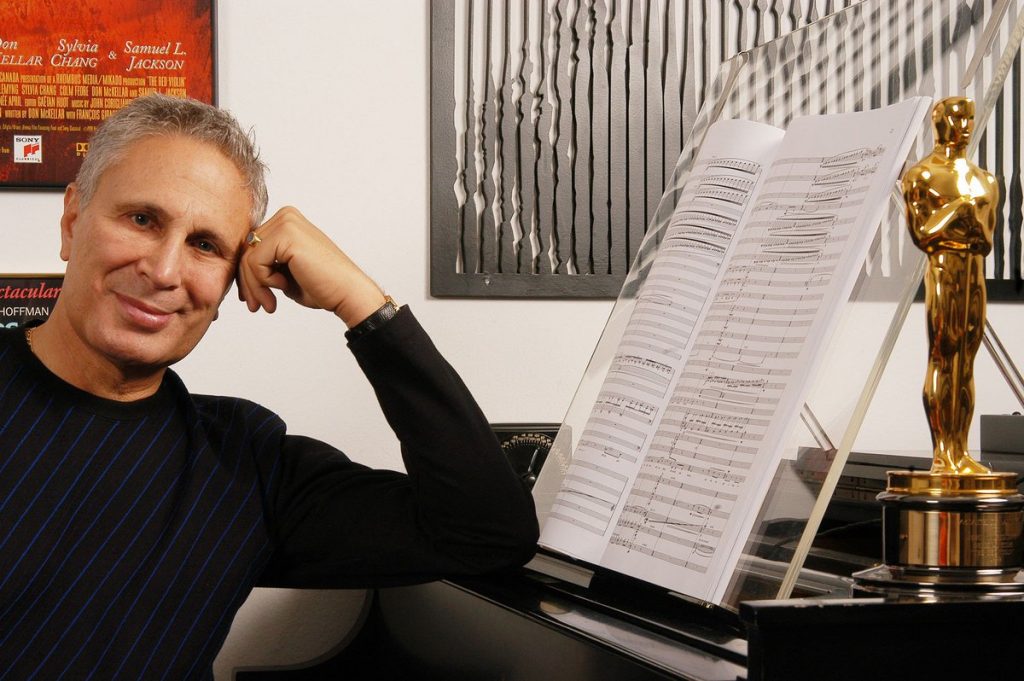


Corigliano[1] (born February 16, 1938) is an American composer of classical music. His scores, now numbering over one hundred, have won him the Pulitzer Prize, five Grammy Awards, Grawemeyer Award for Music Composition, and an Oscar. He is a distinguished professor of music at Lehman College and the Graduate Center of the City University of New York and on the composition faculty at the Juilliard School.
Biography
Before 1964
The Italian-American Corigliano was born in New York City to a musical family. His father, John Paul Corigliano Sr., was concertmaster of the New York Philharmonic for 23 years. Corigliano’s mother, Rose Buzen, was Jewish and an accomplished educator and pianist. Corigliano attended P.S. 241 and Midwood High School in Brooklyn. He studied composition at Columbia University (BA 1959) and at the Manhattan School of Music. He studied with Otto Luening, Vittorio Giannini, and Paul Creston. Before achieving success as a composer, Corigliano worked as assistant to the producer on the Leonard Bernstein Young People’s Concerts and as a session producer for classical artists such as André Watts. He was also music director for New York’s listener-sponsored radio station WBAI.
1964–1987
Corigliano first came to prominence in 1964 at the age of 26 when his Sonata for Violin and Piano (1963) was the only winner of the chamber-music competition of the Spoleto Festival in Italy In 1970, Corigliano teamed up with David Hess to create The Naked Carmen. In a recent communication with David Hess, Hess acknowledged that The Naked Carmen was originally conceived by Corigliano and himself as a way to update the most popular opera of our time (Carmen). Mercury Records wanted the classical and popular divisions to work together and after a meeting with Joe Bott, Scott Mampe and Bob Reno, it was decided to proceed with the project. In Hess’s own words, the project was “a collective decision”.
After he was awarded a Guggenheim Fellowship, Corigliano began teaching at the Manhattan School of Music and became a music faculty member at Lehman College. He credits his first two concerti for solo wind for both changing his art and his career. It was during the composition of his Oboe Concerto (1975) and especially his Clarinet Concerto (1977) that he first used an “architectural” method of composing.
In 1974, he wrote his first film score for the documentary A Williamsburg Sampler. He later wrote the score for Altered States (1980) and his third film score for Revolution (1985). The award-winning score for Revolution is one of Corigliano’s most impressive creations, although it is less known, as it was never released in any recorded format; it has existed in a bootleg form until Varèse Sarabande officially released the score for a limited time in December 2009 through their CD club, and then as a regular release in 2010. Corigliano later used portions of the score in his first symphony.
For flutist James Galway, he composed his third wind concerto, titled Pied Piper Fantasy, which premiered with the Los Angeles Philharmonic (1982). In 1984, he became Distinguished Professor of Music at Lehman College and left his position at Manhattan School of Music in 1986.
1987–present
In 1987, Corigliano was the first composer ever to serve as Composer-in-Residence for the Chicago Symphony Orchestra. During his residency, he composed his first symphony, which was inspired by the AIDS epidemic and to honor the friends he lost. His first symphony won him the University of Louisville Grawemeyer Award for Music Composition in 1991 and his first Grammy Award for Best Classical Contemporary Composition in 1992.
Corigliano’s first and only opera, The Ghosts of Versailles, was the Metropolitan Opera‘s first commission in nearly three decades, celebrating the company’s 100th anniversary. The opera was a huge success at the premiere and received the International Classic Music Awards Composition of the Year award in 1992. In 1991, Corigliano became faculty member at the Juilliard School. In 1995, he was commissioned to write String Quartet (1995) by Lincoln Center for the Cleveland Quartet, which won him his second Grammy Award for Best Contemporary Classical Composition. Corigliano’s fourth film score was for François Girard‘s The Red Violin (1997) which won him his second Academy Award nomination and the 1999 Oscar for best film score. Portions of the score were used in his violin concerto (2003), written for Joshua Bell, who premiered it on September 19, 2003 with the Baltimore Symphony Orchestra. In 2001, he received the Pulitzer Prize for his Symphony No. 2 (2001).
In 2011, Corigliano’s song cycle One Sweet Morning premiered at Avery Fisher Hall by mezzo-soprano Stephanie Blythe and the New York Philharmonic, to commemorate the 10th anniversary of the September 11 attacks. Other important commissions have been Chiaroscuro (1997) for two pianos tuned a quarter tone apart for The Dranoff International Two Piano Foundation, Vocalise (1999) for the New York Philharmonic, Mr. Tambourine Man: Seven Poems of Bob Dylan (2003) which earned him his third Grammy Award, Symphony No. 3 Circus Maximus (2004) for the University of Texas Wind Ensemble, STOMP (2011) written for the 2011 Tchaikovsky Competition in Russia, and Conjurer (2008) commissioned by an international consortium of six orchestras for Evelyn Glennie and winning him his fifth Grammy Award.
Among Corigliano’s students are David Sampson, Eric Whitacre, Elliot Goldenthal, Edward Knight, Nico Muhly, Roger Bergs, Gary Kulesha, Scott Glasgow, John Mackey, Michael Bacon, Avner Dorman, Mason Bates, Steven Bryant, Jefferson Friedman, Jamie Howarth, Dinuk Wijeratne and David Ludwig. In 1996, The Corigliano Quartet was founded, taking his name in tribute.
Music
See also: List of compositions by John Corigliano
Most of Corigliano’s work has been for symphony orchestra. He employs a wide variety of styles, sometimes even within the same work, but aims to make his work accessible to a relatively large audience. Many of his works have been performed and recorded by some of the most prominent orchestras, soloists, and chamber musicians in the world. He has written symphonies, as well as works for string orchestra, wind band, concerti, chamber and solo pieces, opera, as well as for film.
Corigliano’s most distinguished works include his Clarinet Concerto (1977), Symphony No. 1 (1988), The Ghosts of Versailles (1991), Symphony No. 2 for string orchestra (2000), Mr. Tambourine Man: Seven Poems of Bob Dylan (2000), and his score for the film The Red Violin (1998). His clarinet concerto is the first by an American composer to have entered the standard repertoire since Aaron Copland‘s clarinet concerto. https://en.wikipedia.org/wiki/John_Corigliano
————
The American John Corigliano continues to add to one of the richest, most unusual, and
most widely celebrated bodies of work any composer has created over the last forty years.
Corigliano’s scores, now numbering over one hundred, have won him the Pulitzer Prize, the
Grawemeyer Award, four Grammy Awards, and an Academy Award (“Oscar”) and have
been performed and recorded by many of the most prominent orchestras, soloists, and
chamber musicians in the world. Attentive listening to this music reveals an unconfined
imagination, one which has taken traditional notions like “symphony” or “concerto” and
redefined them in a uniquely transparent idiom forged as much from the post-war European
avant garde as from his American forebears.
Perhaps one of the most important symphonists of his era, Corigliano has to date written
three symphonies, each a landscape unto itself. Scored simultaneously for wind orchestra
and a multitude of wind ensembles, Corigliano’s ambitious, extravagant, and grandly
barbarous Symphony No. 3: Circus Maximus (2004) was commissioned by the University
of Texas at Austin Wind Ensemble, who presented it on their 2008 tour in Europe and gave
its New York première in 2005 at Carnegie Hall. Naxos releases its stereo recording of
Circus Maximus in January 2009, and has chosen the work as its début recording in its
upcoming Blu-Ray format. Symphony No. 2 (2001), a rethinking and expansion of the
surreal and virtuosic String Quartet (1995), was introduced by the Boston Symphony
Orchestra in 2000 and earned him the 2001 Pulitzer Prize in Music. Symphony No. 1
(1991), commissioned by Meet the Composer for the Chicago Symphony Orchestra when he
was composer-in-residence, channeled Corigliano’s personal grief over the loss of friends to
the AIDS crisis into music of immense power, color, drama, and scope: performed
worldwide by over 150 orchestras and twice recorded, this symphony earned him the
prestigious Grawemeyer Award for Music Composition.
Corigliano’s theatricality, at once thoughtful and innate, has vivified his eight concerti: his
most recent concerto is Conjurer (2008), for percussion and string orchestra.
Commissioned by an international consortium of six orchestras for Evelyn Glennie, Conjurer
was introduced by the Pittsburgh Symphony in the 2007-2008 season, when the orchestra
designated him its Composer of the Year. For Joshua Bell, Corigliano composed Concerto
for Violin and Orchestra: The Red Violin (2005.) Developed from the themes of the
score to the François Girard’s film of the same name, which won Corigliano an Oscar in
1999, Concerto for Violin and Orchestra was introduced by the Baltimore Symphony Orchestra,
under Marin Alsop and recorded by them in 2007. Vocalise (2000), an unusual singlemovement
wordless concerto for voice, orchestra, and electronics, was commissioned for
the millennium by the New York Philharmonic: Kurt Masur led Sylvia McNair in the work’s
première. Guitarist Sharon Isbin and the St. Paul Chamber Symphony under Hugh Wolff
introduced Troubadours in 1994: flutist James Galway and the Los Angeles Philharmonic
under Myung-Whun Chung gave the first Pied Piper Fantasy in 1982. Corigliano’s kinetic
and elegant Piano Concerto (1967) in which Victor Alessandro led Hilde Somer and the
San Antonio Symphony was his first essay in the genre; but the composer credits his first
two concerti for solo winds with changing both his art and his career. It was during the
composition of the Oboe Concerto (1975; Humbert Lucarelli, oboe: Kazuyoshi Akiyama,
American Composers Orchestra) and, especially, the Clarinet Concerto (1977) that he first
used the “architectural” method of composing which empowers him to forge a strikingly
wide range of musical materials into arches of compelling aural logic: the première of the
Clarinet Concerto, with Stanley Drucker and the New York Philharmonic under Leonard
Bernstein, was by contemporary accounts the musical event of the year.
While he has composed three large-scale works for voice and orchestra, Corigliano’s lone
opera to date is The Ghosts of Versailles (1991), which counterposes the fiction of Mozart
and Beaumarchais with the Reign of Terror to create a richly multilayered meditation on the
need for, and costs of, personal and social change. The Metropolitan Opera’s first
commission in three decades, The Ghosts of Versailles succeeded brilliantly with both critics
and audiences: the season it opened, Corigliano was elected to the American Academy and
Institute of Arts and Letters, and Musical America named him its first-ever “Composer of the
Year.” After triumphs in Chicago, Houston, and Hannover, Germany, The Ghosts of
Versailles returns to the American stage in a newly orchestrated smaller version in June 2009:
first scheduled by the Opera Theatre of Saint Louis, the production includes stops in
Vancouver and the Wexford Festival on a lengthening list of future engagements.
Corigliano’s two other major vocal works show a comparably lavish and powerful sense of
vocal theatre. Mr. Tambourine Man: Seven Poems of Bob Dylan (2000) boldly
refashions texts by the iconic songwriter into a compelling monodrama, by turns savage,
yearning, and hallucinatory; begun as a song cycle for piano and soprano in 2000, Corigliano
rescored the piece for full orchestra and amplified soprano in 2004. Its Naxos recording, on
which JoAnne Falletta leads the Buffalo Philharmonic, was released in September 2008 and
garnered Grammy nominations both for the work itself and for its leading interpreter, the
soprano Hila Plitmann. A Dylan Thomas Trilogy (1960, rev. 1999) revisits and combines
three of Corigliano’s earlier settings of this poet — Fern Hill (1960), Poem in October (1970),
and Poem on His Birthday (1976) — with the late Author’s Prologue into a “memory play in the
form of an oratorio.” Scored for boy soprano, tenor, baritone, chorus, and orchestra, A
Dylan Thomas Trilogy was recorded in spring 2008 with Leonard Slatkin conducting Sir
Thomas Allen and the Nashville Symphony and Chorus: it was released by Naxos in
November 2008.
Corigliano is one of the few living composers to have a string quartet named for him: its
young players banded together after an Indiana University performance of his String
Quartet (1995,) which Corigliano wrote as a valedictory commission for the Cleveland
Quartet and which won him that year’s Grammy Award for best contemporary composition.
His first chamber score, his Violin Sonata (1964) is now a standard of the American
violinist’s repertory, having been performed hundreds of times and recorded dozens since
the Spoleto Festival awarded the piece first prize in its inaugural Chamber Music
Competition: his newest is Winging It: Improvisations for Solo Piano (2008), to be
introduced by Ursula Oppens in February 2009. It joins in his keyboard catalogue the
virtuoso showpieces Etude Fantasy (1976) and Fantasia on an Ostinato (1985) for solo
piano, and the unique Chiaroscuro (1997), for two pianos tuned a quarter-tone apart. Also
upcoming is the August 2009 première in Sydney, Australia, of Corigliano’s new
arrangement of Mr. Tambourine Man (2009) for voice and Pierrot ensemble, which, like
the version of Poem on His Birthday for tenor and eight instruments (1970), casts these
orchestral pieces for chamber ensemble with no loss of force. Phantasmagoria (2000),
revisits themes from The Ghosts of Versailles for cello and piano; Fancy on a Bach Air
(1996) varies Bach for solo cello. His earliest songs form the cycle The Cloisters, (1965)
written with William M. Hoffman, who also wrote the libretto to The Ghosts of Versailles: his
latest are a trio of Cabaret Songs to the lyrics of opera composer-librettist Mark Adamo
(End of the Line, Marvelous Invention, and Dodecaphonia (or, They Call Her Twelve-Tone Rose)
introduced by William Bolcom and Joan Morris.
Corigliano serves on the composition faculty at the Juilliard School of Music and holds the
position of Distinguished Professor of Music at Lehman College, City University of New
York, which has established a scholarship in his name. Born in 1938 to John Corigliano Sr.,
a former concertmaster of the New York Philharmonic, and Rose Buzen, an accomplished
pianist and educator, Corigliano has lived in New York City all his life: for the past fourteen
years he and his partner, Mark Adamo, have divided their time
between Manhattan and Kent Cliffs, New York. http://www.johncorigliano.com/index.php?p=item5
Yueun Kim, Violin Sung Chang, Piano Video& Audio Credit: -Boulder International Chamber Music Competition (or BICMC) – Art of Duo -Soundpost Acoustics -Mineral Sound Live Performance 10.13.2018 Boulder, Colorado
In the world of classical music, you typically need to die before your music gets taken too seriously. Kind of a bummer from a career-building perspective. So many major classical composers did not enjoy anything like their well-established reputations during their lifetimes – stand up and take a bow Bruckner, Mahler, Berlioz, etc. I guess once you’re dead, your oevre is sort of set in stone, and you can’t go about upsetting the pronouncements of the ‘experts’ by releasing a confounding new work.
Even so, there are today a number of living composers whose work does gain a grudging degree of respect, and one of those is the American composer John Corigliano, who turned 80 earlier this year. I am a huge fan of his Symphony No 1, written thirty years ago in response to the then-emerging AIDS crisis, and subtitled “Of Rage And Remembrance”. It was inspired by the famous AIDS Memorial Quilt, an enormous mosaic made up of thousands of separate quilts, each an individual memorial woven by friends and relatives of a person who had died of AIDS. Corigliano was inspired to create a musical memorial in commemoration of the many personal friends he had lost to the disease. https://www.psaudio.com/article/john-corigliano-symphony-no-1/
